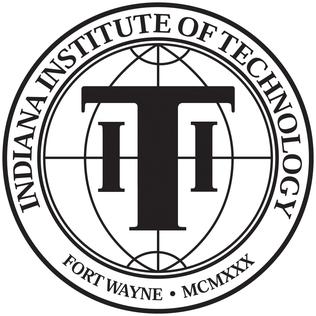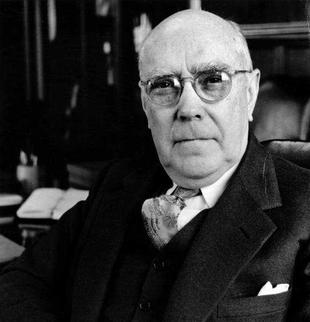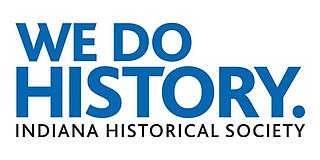
Fort Wayne is a city in and the county seat of Allen County, Indiana, United States. Located in northeastern Indiana, the city is 18 miles (29 km) west of the Ohio border and 50 miles (80 km) south of the Michigan border. The city's population was 263,886 as of the 2020 Census, making it the second-most populous city in Indiana after Indianapolis, and the 76th-most populous city in the United States. It is the principal city of the Fort Wayne metropolitan area, consisting of Allen and Whitley counties which had an estimated population of 423,038 as of 2021. Fort Wayne is the cultural and economic center of northeastern Indiana. In addition to the two core counties, the combined statistical area (CSA) includes Adams, DeKalb, Huntington, Noble, Steuben, and Wells counties, with an estimated population of 649,105 in 2021.

Greensburg is a city in and the county seat of Decatur County, Indiana. The population was 12,312 at the time of the 2020 census.

Indiana Institute of Technology is a private university in Fort Wayne, Indiana. It was founded in 1930 as Indiana Technical College by John A. Kalbfleisch, who was also the school's first president.

The Indiana State Fair is an annual state fair that spans 18 days in July and August in Indianapolis, Indiana, U.S. The Indiana State Fair debuted in 1852 at Military Park in Indianapolis and is the sixth oldest state fair in the U.S. It is the largest event in the state, drawing between 730,000 and 980,000 visitors annually since 2010. In 2015, readers of USA Today ranked the Indiana State Fair among the ten best state fairs in the country.

The Sagamore of the Wabash is an honorary award created by the U.S. state of Indiana during the term of Governor Ralph F. Gates, who served from 1945 to 1949. A tri-state meeting was to be held in Louisville with officials from Indiana, Ohio and Kentucky. Aides to Gates learned that the governor of Kentucky was preparing "Kentucky Colonel" certificates for Gates and Senator Robert A. Taft, who was representing Ohio. The Indiana delegation decided to create an appropriate award to present in return.

Eli Lilly, sometimes referred to as Eli Lilly Jr. to distinguish him from his grandfather of the same name, was an American pharmaceutical industrialist and philanthropist from Indianapolis, Indiana, United States. During his tenure as head of Eli Lilly and Company, which was founded by his grandfather, the company grew from a successful, family-owned business into a modern corporation and industry leader. Lilly served as the company president (1932–1948), chairman of the board of directors, and honorary chairman of the board.
Lilly Endowment Inc., headquartered in Indianapolis, Indiana, is one of the world's largest private philanthropic foundations and among the largest endowments in the United States. It was founded in 1937 by Josiah K. Lilly Sr. and his sons, Eli Jr. and Josiah Jr. (Joe), with an initial gift of Eli Lilly and Company stock valued at $280,000 USD. As of 2020, its total assets were worth $21 billion.

WLFI-TV is a television station in Lafayette, Indiana, United States, affiliated with CBS and The CW Plus. Owned by Allen Media Broadcasting, the station maintains studios on Yeager Road in West Lafayette; its transmitter is located on County Road 700 in rural northwestern Clinton County.

The history of human activity in Indiana, a U.S. state in the Midwest, stems back to the migratory tribes of Native Americans who inhabited Indiana as early as 8000 BC. Tribes succeeded one another in dominance for several thousand years and reached their peak of development during the period of Mississippian culture. The region entered recorded history in the 1670s, when the first Europeans came to Indiana and claimed the territory for the Kingdom of France. After France ruled for a century, it was defeated by Great Britain in the French and Indian War and ceded its territory east of the Mississippi River. Britain held the land for more than twenty years, until after its defeat in the American Revolutionary War, then ceded the entire trans-Allegheny region, including what is now Indiana, to the newly formed United States.

John Ottis Adams was an American impressionist painter and art educator who is best known as a member of the Hoosier Group of Indiana landscape painters, along with William Forsyth, Richard B. Gruelle, Otto Stark, and T. C. Steele. In addition, Adams was among a group that formed the Society of Western Artists in 1896, and served as the organization's president in 1908 and 1909.

The Indiana Historical Society (IHS) is one of the United States' oldest and largest historical societies and describes itself as "Indiana's Storyteller". It is housed in the Eugene and Marilyn Glick Indiana History Center at 450 West Ohio Street in Indianapolis, Indiana, in The Canal and White River State Park Cultural District, neighboring the Indiana State Museum and the Eiteljorg Museum of American Indian and Western Art. In 2019, the center hosted 112,732 visitors. The Indiana Historical Society is the oldest state historical society west of the Allegheny Mountains.
Lyles or Lyles Station is an unincorporated community in Patoka Township, Gibson County, Indiana. The community dates from 1849, although its early settlers first arrived in the 1830s, and it was formally named Lyles Station in 1886 to honor Joshua Lyles, a free African American who migrated with his family from Tennessee to Indiana around 1837. Lyles Station is one of Indiana's early black rural settlements and the only one remaining. The rural settlement reached its peak in the years between 1880 and 1912, when major structures in the community included the railroad depot, a post office, a lumber mill, two general stores, two churches, and a school. By the turn of the twentieth century, Lyles Station had fifty-five homes, with a population of more than 800 people. The farming community never fully recovered from the Great Flood of 1913, which destroyed much of the town. Most of its residents left for economic reasons, seeking opportunities for higher paying jobs and additional education in larger cities. By 1997 approximately fifteen families remained at Lyles Station, nearly all of them descended from the original settlers.

Indiana, a state in the Midwest, played an important role in supporting the Union during the American Civil War. Despite anti-war activity within the state, and southern Indiana's ancestral ties to the South, Indiana was a strong supporter of the Union. Indiana contributed approximately 210,000 Union soldiers, sailors, and marines. Indiana's soldiers served in 308 military engagements during the war; the majority of them in the western theater, between the Mississippi River and the Appalachian Mountains. Indiana's war-related deaths reached 25,028. Its state government provided funds to purchase equipment, food, and supplies for troops in the field. Indiana, an agriculturally rich state containing the fifth-highest population in the Union, was critical to the North's success due to its geographical location, large population, and agricultural production. Indiana residents, also known as Hoosiers, supplied the Union with manpower for the war effort, a railroad network and access to the Ohio River and the Great Lakes, and agricultural products such as grain and livestock. The state experienced two minor raids by Confederate forces, and one major raid in 1863, which caused a brief panic in southern portions of the state and its capital city, Indianapolis.

The Underground Railroad in Indiana was part of a larger, unofficial, and loosely-connected network of groups and individuals who aided and facilitated the escape of runaway slaves from the southern United States. The network in Indiana gradually evolved in the 1830s and 1840s, reached its peak during the 1850s, and continued until slavery was abolished throughout the United States at the end of the American Civil War in 1865. It is not known how many fugitive slaves escaped through Indiana on their journey to Michigan and Canada. An unknown number of Indiana's abolitionists, anti-slavery advocates, and people of color, as well as Quakers and other religious groups illegally operated stations along the network. Some of the network's operatives have been identified, including Levi Coffin, the best-known of Indiana's Underground Railroad leaders. In addition to shelter, network agents provided food, guidance, and, in some cases, transportation to aid the runaways.

Indiana is a U.S. state in the Midwestern United States. It is the 38th-largest by area and the 17th-most populous of the 50 States. Its capital and largest city is Indianapolis. Indiana was admitted to the United States as the 19th state on December 11, 1816. It is bordered by Lake Michigan to the northwest, Michigan to the north and northeast, Ohio to the east, the Ohio River and Kentucky to the south and southeast, and the Wabash River and Illinois to the west.

Indiana University (IU) is a system of public universities in the U.S. state of Indiana.
Indiana Humanities is a nonprofit organization based in Indianapolis that funds and produces public humanities programming throughout the state of Indiana. It is one of 56 humanities councils in the United States and is affiliated with the National Endowment for the Humanities.
The Jewish American Society for Historic Preservation (JASHP) is an American non-profit 501(c)(3) volunteer historical society. The society locates sites of American and Jewish historical interest and importance. It works with local community organizations, synagogues, churches, historical societies, governments and individuals, to erect interpretive historical markers that help illuminate the American-Jewish experience and reflect on the commonality of being American.
Eugene B. Glick was an American philanthropist and builder from Indiana. After returning from serving with the U.S. Army in the European theater during World War II, he and his wife, Marilyn Glick, began constructing housing in the Indianapolis area with other military veterans in mind. Originally concentrating on building single-family homes and then shifting to apartment projects in the 1960s, the Glicks amassed a considerable fortune over their lifetimes, the bulk of which they used for extensive philanthropic endeavors.
Henry Kahn was an American businessman and tailor who lived in Indianapolis, Indiana, and founded the Kahn Tailoring Company.














